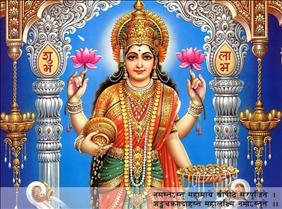Diwali, the Festival of Lights, has been celebrated throughout India since times unknown in history.
Hindus living in grass-thatched mud hut to mansions, and those involved with commercial or industrial establishments or temples mark the festival with joy.
Apart from Hindus and followers of other indigenous sects, including Jains, Sikhs, Buddhists, Christians and Muslims join in the festivities with enthusiasm.
Crackers, an essential feature of Diwali, are the delight of youngsters.
More than a religious festival, Diwali is perceived as the battle of light against darkness – a tiny lamp’s determination to illuminate the earth and the sky setting them free from the all-enshrouding darkness.
The vanquisher
Diwali celebrates this victory of the tiny lamp, its humble effort to fight out the gigantic darkness. People see in the tiny lamp their own effort to wade across the ocean of adversities, and this sense fills them with renewed confidence and fresh vigour for the days to come.
Diwali is the festival of renewing confidence in oneself and among all.
It is a festival that inspires universal goodness and prosperity beyond caste and creed. Whatever its sectarian context, over time it has attained the magnitude of a national festival, breathing a strange sense of belonging.
Whether the lamp is lit in a temple or chapel, in a hut or palace, before the image of Christ, Mahavira, Buddha or Lakshmi and Ganesh, or before the sacred Bir – Holy Scripture, in a Gurdwara or at home, it is essentially a desire for light, an intrinsic determination to combat darkness, inherent compulsion for freeing oneself from all that is narrow, besides a lot of shopping and display of good taste, that now define the festival of Diwali.
Universal theme
Sectarian contexts apart, light imparts to Diwali universal breadth, a unique magnificence and divine dimensions rarely associated with any other festival.
As light is benevolent and auspicious, light’s birth is by itself a celebration.
Seers saw light as both the Supreme Creator, as also the creation.
Reiterating Kabir, Guru Nanak sang, ‘Eka Noor Te Saba Jaga Upaya’ (the entire universe is born of one light), or when Prophet Mohammad uttered that the universe is nothing but the extension of His ‘Noor’ – light, they both saw the Creator as a glow of light.
It was hardly different for Shaivites who consecrated the Supreme Being as Jyotir-linga, the light combined with phallus, the fertility factor.
This Supreme One wished: ‘Ekoham Bahusyami’ – I am one but wish to multiply, and thus out of His expansion the cosmos came into being.
Hardly different from these philosophical utterances is the common man’s allegory when on a child’s birth a mother sings: ‘Jaga Ujiyaro Hoya’, that is, with the child’s birth, which symbolises to her the emergence of light, ‘the world is illuminated’.
When a living self passes away, the wise say, ‘Jyoti Mein Jyoti Samani’, that is, the flame has merged with the Supreme Flame.
Vedic interpretation
The Buddhist tradition depicts, both in scriptures and art, a glowing flame passing off the body of Buddha to portray his Maha Parinirvana – final extinction.
The Rig Veda holds Surya, the Sun God in highest reverence, for, unless there was light even the manifest does not manifest.
The Upanishad interpretation of the Rig-Vedic Sukta is clearer.
Emergence of light is also the emergence of cosmos; even if the cosmos existed, it would not manifest unless there was light.
That is why the tradition reiterated: ‘Tamsoma Jyotirgamaya’ – let the darkness depart and the light emerge.
 Metaphorically or otherwise, it is by the emergence of light that the factum of Creation has been indicated, in India and everywhere else.
Metaphorically or otherwise, it is by the emergence of light that the factum of Creation has been indicated, in India and everywhere else.
The Biblical tradition heralds: ‘Let there be light and the light was there’.
Here also the Supreme One desired the emergence and once the light was there, there was the Creation too.
Maybe, the light’s relation with the Creation was just symbolic, suggesting that the world existed in light and disappeared in darkness.
However, light is God’s verse that he writes on the face of the universe, and hence, whatever is divine is endowed with light, while dark avenues are devil’s abode.
This light is the endless celebration of Nature and humanity.
Perceptions, perspectives, dimensions and forms, are all light’s creation, with beauty, splendour, goodness, purity being its finer shades.
Love, optimism, delight, festivities and everything that is auspicious, holy or divine is associated with light.
In its intrinsic form, light is the attainment of ultimate knowledge and thereby of the supreme bliss, and thereafter there is no darkness and nothing between the seer and the seen.
The light is, thus, the ultimate vision of this world and the world beyond, and so its celebration, a thing of this world as also of the other.
Nitin Kumar is the Editor of exoticindia.com. The above article has been reproduced with his permission. Exotic India 2012 ©






